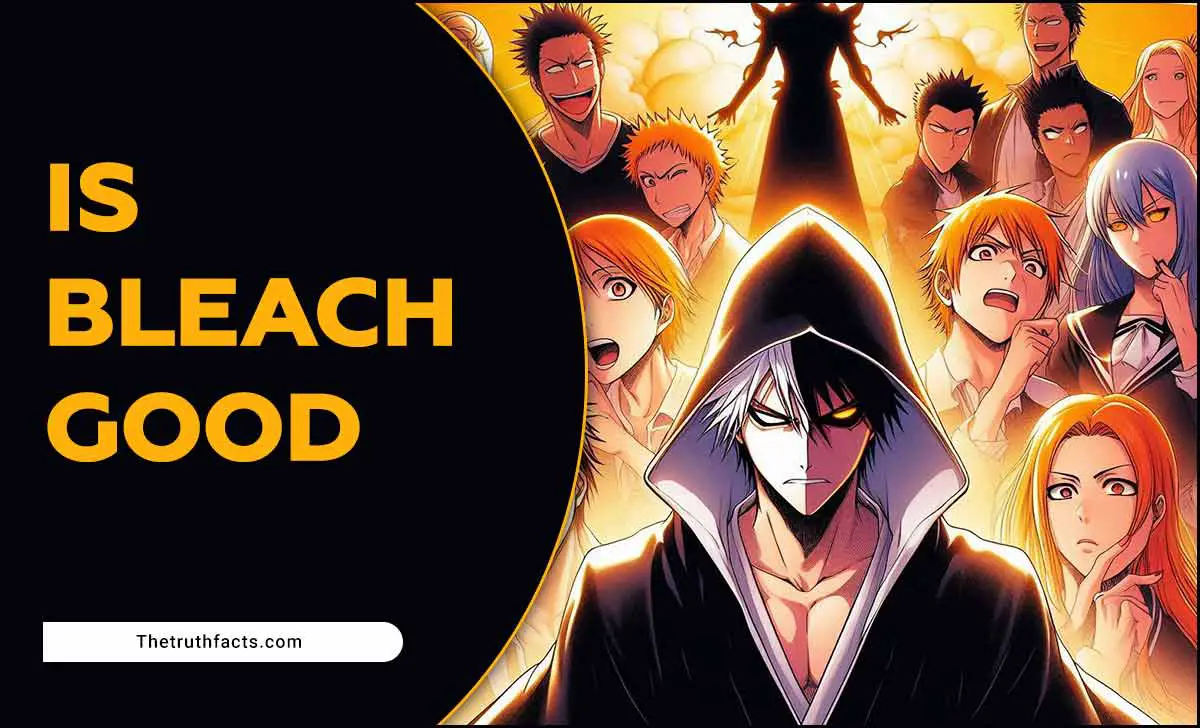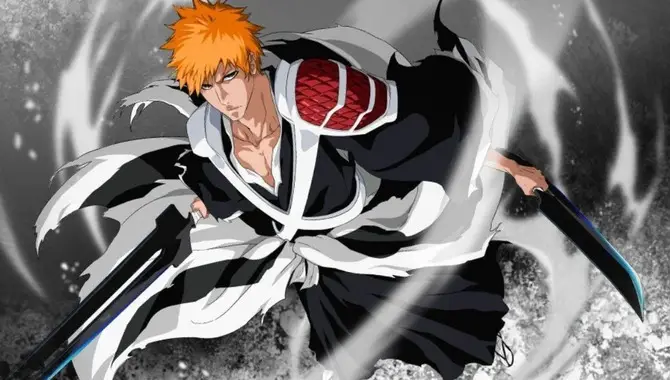We often use bleach as our household helping agent. Sometimes for cleaning clothes and sometimes to disinfect the basin and the toilet. But do we know the science behind bleaching?
Is bleach good? Is bleach that good as we believe? The answers are both yes and no. Yes, as long as you use the bleach in the right way. No, if you do so without proper knowledge. In this article, we will discuss both the right ways to use bleach and the wrongs to alert our fellow readers. What are you waiting for then? Hop on into the article and be a better bleach user.

Is Bleach Very Good? How Does It Work?

Let’s start with the answer to this question. How does bleach work? How do they fade and whiten everything they touch? Is there a chemical process related to its functioning? Even though we mostly know bleach as our household helping hand, there are several types of bleach.
The one we use the most- household bleach-is sodium hypochlorite and is called chlorine bleach. There are two other common types of bleach, namely oxygen bleach and powder bleach. The oxygen bleach got its name because it releases peroxide every time you mix it with water. And the type we know as bleaching powder or powder bleach contains calcium hypochlorite.
To know the science behind bleaching, you have to understand the science behind the color of the fabrics or things first. The substance that you see as a colorful one has a specific chromophore that reflects only a specific range of spectrum of light.
Too scientific? No problem. You see a red dress only because the material of the dress can reflect only the red color. As the dress can’t reflect other colors, you can’t see any other color except red in the dress.
Now coming to our science behind bleaching. The bleach we use (or any bleach) creates oxidation when it works. With the oxidation process, bleach breaks up the chromophore (material). As there are no (or fewer) chemical compounds left responsible for the color, we will either see no color or a faded color. Not that complex, is it?
Is Bleach Good? Know All The Details

Is bleach very good? Good for what? For cleaning cloths or disinfecting hard surfaces? Or even good for whitening teeth? We can’t give you the appropriate answer if your question is not specific.
We mostly use bleach for cleaning and disinfecting purposes. If you are using bleach for quite a while, you should already know what bleach is good for. Yes, bleach is not the best cleaner out there. But it is surely one of the best disinfectants if you dilute it properly. As it can fight germs very well and clean your clothes moderately, you can use it as a cleaning agent if you want to.
But if you want our suggestion, we will not say bleach is the best cleaner out there. It can be a very handy item if you know where to use them that we are mentioning later in this article. Assuming your question is ‘Is bleach suitable for cleaning?’, our answer is no. It is in no way near ‘good’ for cleaning purposes. It can even fade the natural color of your premium cloth if you are not careful.
But if your question is ‘Is bleach suitable for disinfecting something?’ Hell, yes. You have hit the right spot. If bleach can disinfect something rough like your toilet and basin, what can’t it disinfect?
How To Use Bleach Properly?
Now you know that bleach is not the perfect choice among cleaners. But it is not the worst either. That is why if you use bleach smartly, you can get the most out of it. The following are the best areas to use bleach to get the best out of it.
1. Clean Your Kitchen Items
A solution of a proper amount of bleach and water is an ideal choice to keep your kitchen items clean and disinfected. You can even clean plastic cutting boards with bleach from glassware, dishes, stainless forks, and spoons. Why not get into it right away if you have unclean dishes in your kitchen?
Know About: Anime Female Superhero
2. Clean Your Baby’s Toys
Yes, bleach should be your ideal choice while cleaning your baby’s toys. As bleach is a very good disinfector, you should use it to clean your baby’s toys. Because kids are prone to germs, and for this reason, you should do everything to keep them outside of germs’ contact, right?
3. Clean Mold And Mildew
Another very smart use of bleach would be using it to clean mold and mildew. As bleach is a very good disinfector, it can easily kill the fungus that mold and mildew contain. A mixture that contains the same proportion of water and bleach would be enough to get the job done in this regard.
4. Keep Your Garbage Cans Fresh

Your garbage cans need more attention than your thoughts. Yes, that is right. If you keep your garbage cans unclean for a long time, it can be the resident of some dangerous and unwelcoming threats. Bleach is the savior, here again, yet another time.
5. Keep Your Garden Healthy
Keeping your planters and flower vases clean is one of the smartest ways to keep your garden healthy. Yes, you heard it right. Vases and planters can contain germs that are tough to get rid of.
And here comes our tough fighter in this regard. A proportion of half cup of bleach and one gallon of water will be enough.
Know About: Cancellation of Flapjack
6. Whiten Second-Hand White Linens
Bleach is a great material to whiten something. Even if you don’t want it to, it will fade the color of the thing it touches. That is why bleach should be the choice of yours to whiten second-hand white linens.
7. Help Your Christmas Tree To Live Longer
Here’s the secret trick. You can use a secret mixture instead of just water to increase the life of your Christmas tree. Make a mixture with 10ml of bleach, 2 liters of water, 30ml of powdered iron, and 250ml of corn syrup. That’s it. The secret solution to lengthen the life of your Christmas tree!
8. Keep Flowers Alive Longer
Just like increasing the life of your Christmas tree, you can also lengthen the life of fresh-cut flowers with a bleach solution. In this case, you have to use a solution of 1.25ml bleach and 1-quart water. Before doing so, remember to cut the stems of the flowers in a diagonal shape.
9. Get Rid Of The Odor Of The Litter Box

Is the odor of the litter box of your pet too much to bear? No worries. Bleach is the solution to your problem once again. First, clean the litter box with water and rinse. Then apply a solution of 125ml bleach and 1-gallon water. Keep the solution for five minutes before rinsing it off.
10. Get Rid Of Moss And Algae
Like fighting mold and mildew, you can get rid of moss and algae, too, with the help of bleach. Be careful while applying the solution, and don’t get bleach on necessary grasses. The solution should be 175ml of bleach and 1 gallon of water.
Bonus: Make A DIY Spray
You may not have the time to make a certain mixture to clean or disinfect something in dire situations. To help yourself in emergencies, you can always make your DIY spray. Make a solution with 15ml bleach and 500ml water. This solution should be ideal for cleaning hard substances like windows, doors, glasses, tiles, etc.
1. Do Not Use Bleach To Wash Fruits And Vegetables
Doesn’t it seem appealing to wash fruits and vegetables with bleach as it is a great disinfector? Yes, it does. But it would help if you did not do it, as you may risk destroying the essential proteins by doing so. Remember, bleach is a rough cleaner.
2. Do Not Drink Or Gargle With Bleach
No. It is never a good idea to gargle with bleach, even if it is properly diluted. You may think it can kill off germs of your body, but it doesn’t work that way. Instead, you may have potential burns by gargling or drinking bleach.
3. Do Not Bathe In Bleached Water
Again, it may cause serious issues with your skin. There is a big difference between the approved use of bleach in pool water and household bleach. That is why you should not use bleach as a disinfector to get rid of your body’s germs.
4. Do Not Wash Your Face Mask With Undiluted Bleach
Bleach is a good disinfector. But it would help if you did not use undiluted bleach by any means to clean or disinfect anything you are going to touch or use. Even though it is unnecessary to use bleach to clean your face mask properly, you can use diluted bleach to get the job done.
5. Do Not Mix Bleach With Other Cleaning Items
As bleach is not the perfect cleaner but a pretty good disinfector, an idea may pop up in your mind. Why not use bleach with other cleaners and make it a super-effective cleaner to clean something and disinfect it properly? Here comes a big no. If you do so, it can create a very toxic chemical that is very dangerous even to breathe in.
6. Where Should You Not Use Bleach?
As we have mentioned earlier, maintaining the “don’ts” is crucial for making bleach handy as a daily household helping agent. Without any further ado, let’s hop into the don’ts.
How To Be Sure You’re Using Bleach Properly

Bleach is a great way to clean everything from your kitchen sink to your laundry machine, but it can also be dangerous if not used properly. Here are some tips to help ensure you’re using bleach safely:
- Read the label – Make sure to read the label before using bleach, as there may be specific instructions for how to use it safely.
- Use 1 cap per load – Bleach should be used in 1 cap per load, and only in the correct amount needed to clean the area. Too much bleach will damage your clothes and furniture, while too little will not work at all.
- Use caution when working with liquids – When working with liquids (such as bleach), always wear gloves, eye protection, and a dust mask if necessary. If you get splashed, wear a protective clothing and stay away from open flames.
- Take care when disposing of bleach – Always make sure to properly dispose of bleach by recycling or throwing it away in accordance with local regulations. Bleach can be harmful if inhaled or ingested, so take care when handling it!
Skin Bleaching Products and Procedures, Side Effects and Benefits
Skin bleaching products and procedures can vary in terms of their ingredients, side effects, and benefits. However, all of them have one thing in common – they are designed to lighten skin color.
Side effects of skin bleaching products can include dryness, peeling, redness, itching, and irritation. Some people also experience breakouts or scarring. While bleaching can improve the appearance of skin color, it is not a permanent solution and may require repeated use.
Some benefits of skin bleaching include a lighter complexion that may be more suitable for certain skin types, reduced acne severity, and an increased confidence level. However, there is always the potential for skin cancer if the bleaching procedure is done incorrectly or if excessive exposure to the sun is maintained. If you are considering using skin bleaching products or procedures, be sure to speak with a dermatologist first to get advice on the safest and most effective way to achieve your desired results.
Cleaning and Disinfecting With Bleach and Water
Bleach can be used to clean and disinfect surfaces with a mild bleach solution. Dilute 1 cup of bleach in 1 gallon of water, and use the solution to clean surfaces. Bleach can also be used to sanitize hands, surfaces, and equipment.
To sanitize hands, pour a small amount of bleach solution into your palm, rub your hands together, and then wash your hands. To sanitize equipment, pour a small amount of bleach solution onto a cloth and wipe down the surface.
Bleach and water are the most common ways to clean and disinfect surfaces. Bleach is a strong oxidizer that destroys organic material, while water is a neutralizer that removes acidity.
Bleach is most effective when used in a liquid or gas form, while water is most effective when used in a spray or droplet form. Follow these guidelines for proper cleaning and disinfecting with bleach and water:
- Dilute bleach according to the product directions.
- Wet the area to be cleaned with water, then apply bleach using a spray bottle or mop. Work the bleach into the surface with a sweeping motion.
- Rinse the area with clean water, then dry it off thoroughly.
Bleach Is the Worst of the Best Shonen Anime

Bleach may be one of the most popular shonen anime, but that doesn’t mean it’s without its flaws. In this article, we’re going to discuss some of the worst aspects of Bleach, and why you should avoid watching it if you’re looking for a quality anime series.
- Poor character development – Many of the characters in Bleach are one-dimensional and lack any real development over the course of the series. This makes it difficult to sympathize with them or root for them, which can make it difficult to enjoy the story.
- Lack of plot – The plot in Bleach is generally formulaic and predictable, which can make it difficult to stay engaged with the series. There are also a number of unresolved plot lines that leave much to the imagination, which can frustrate viewers.
- Poor animation – The animation in Bleach is generally poor, and often clashes with the sleek and stylish fight scenes that are typical of shonen anime. This results in a jarring experience that can ruin an otherwise good series.
In conclusion, if you’re looking for an enjoyable shonen anime series that won’t frustrate or confuse you, you should avoid Bleach completely. There are plenty of better options out there that will provide you with a more satisfying viewing experience.
Before You Do Anything, Make Sure Your Product Disinfects
This is a great question! In order for your product to be safe for people to use, it needs to be disinfected. This means that the product has been treated with an antimicrobial agent to kill any potential bacteria or fungus. Disinfectants can be used before, during, or after the manufacturing process.
There are many different disinfectants that can be used in manufacturing, and each one has its own benefits and drawbacks. Typically, disinfectants are classified as either chemical or biological agents. Chemical disinfectants work by breaking down the chemical makeup of the target organism. Biological agents attack and kill microorganisms by attacking their cells or DNA.
The most important thing to remember when using disinfectants is to properly dilute them before use. Too much concentration will kill the target organism, while too little will not have an impact at all. Always follow the instructions on the label carefully to ensure safe and effective use of your product’s disinfectant.
The Best of Both Worlds: Bleach and Baking Soda Together
Bleach and baking soda are two great cleaning solutions that can be used together to get your home clean in no time. Here’s how:
- Wet down the area you want to clean with a solution of bleach and water.
- Sprinkle baking soda on top of the bleach solution, making sure to cover all the area you want cleaned.
- Let the baking soda do its job, and then rinse off the area with water.
This simple method is perfect for cleaning surfaces like walls, floors, and furniture, as well as removing dirt, stains, and odors. Plus, it’s safe to use on most surfaces thanks to the bleach and baking soda combination. Thanks for reading!
Is Bleach Bad for Pipes? Do’s and Don’ts of Using Bleach
Bleach can be a very effective way to clean pipes, but like any other chemical, it should only be used in a safe and appropriate way. Here are some do’s and don’ts of using bleach to clean pipes:
- DO use bleach to clean all types of pipes – including copper, steel, plastic, and even rubber
- DO use a dilute solution of bleach – only use enough to cover the pipe and let it sit for several minutes
- DON’T use chlorine-based bleach – these cleaners are harmful to both your plumbing system and the environment
- DON’T pour bleach down the drain – it will eventually reach your water supply and contaminate it
- DON’T use bleach on tiles or other hard surfaces – it can damage them
Cleaning And Sanitizing With Bleach After An Emergency
Bleach is a great way to clean and sanitize after an emergency. It is effective at killing any harmful germs, and it is safe to use around people and pets. Here are a few safety tips to keep in mind when using bleach:
- Follow the manufacturer’s instructions carefully – Always read the manufacturer’s instructions carefully before using bleach. These instructions will contain important information about the correct concentration of bleach to be used, as well as specific safety warnings.
- Use caution when cleaning with bleach – Always use caution when cleaning with bleach, and stay away from open flames and other sources of ignition. Bleach can damage surfaces if it comes into contact with them, so be sure to use it in a well-ventilated area.
- Protect your eyes and nose – When using bleach, be sure to protect your eyes and nose by wearing appropriate eye protection and protective clothing if necessary. Also, avoid breathing in the fumes generated by bleach.
- Keep containers closed – When not in use, keep containers of bleach closed to prevent exposure to harmful fumes.
These are just a few basic safety tips for using bleach in an emergency situation. If you have any additional questions or concerns about using bleach in an emergency situation, please don’t hesitate to contact us! We would be happy to help you out!
Does Bleach Kill Weeds and Grass?
Bleach is a very common household cleaner and many people use it to clean their grass and weeds. Although bleach can kill these plants, it is important to use it in a safe and appropriate way.
Bleach can kill grass by destroying the root system and killing the grass cells. It can also damage leaves and flowers, making them orange or yellow. Bleach should only be used on surfaces that are clean and dry. Before using bleach, make sure that all surfaces that will be exposed to it are clean and free of any oils, dirt, or other chemicals. Follow the label instructions carefully to ensure safe and effective use.
Wrap Up
At this point, you should know the answer to the question, “is bleach good?” We tried to answer this question merely and tried to help you make a better bleach user. By following our advice, you can easily get the most out of bleach and avoid any potential danger. Till then, stay happy and stay safe.
FAQs

I’m a writer and blogger who loves to talk about entertainment, culture, and relationships. I love to share my thoughts and insights on these topics, and I’m always looking for new ways to engage with my readers. I’m also a big fan of learning new things, so I’m always exploring new areas of interest.
